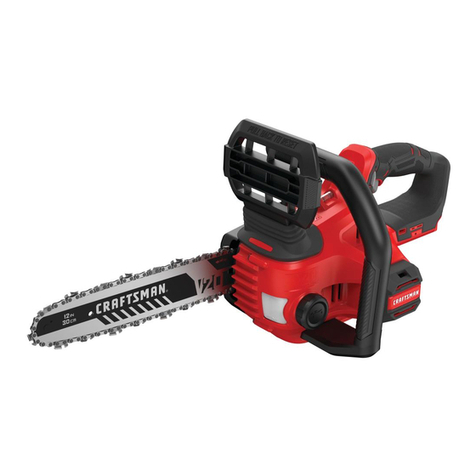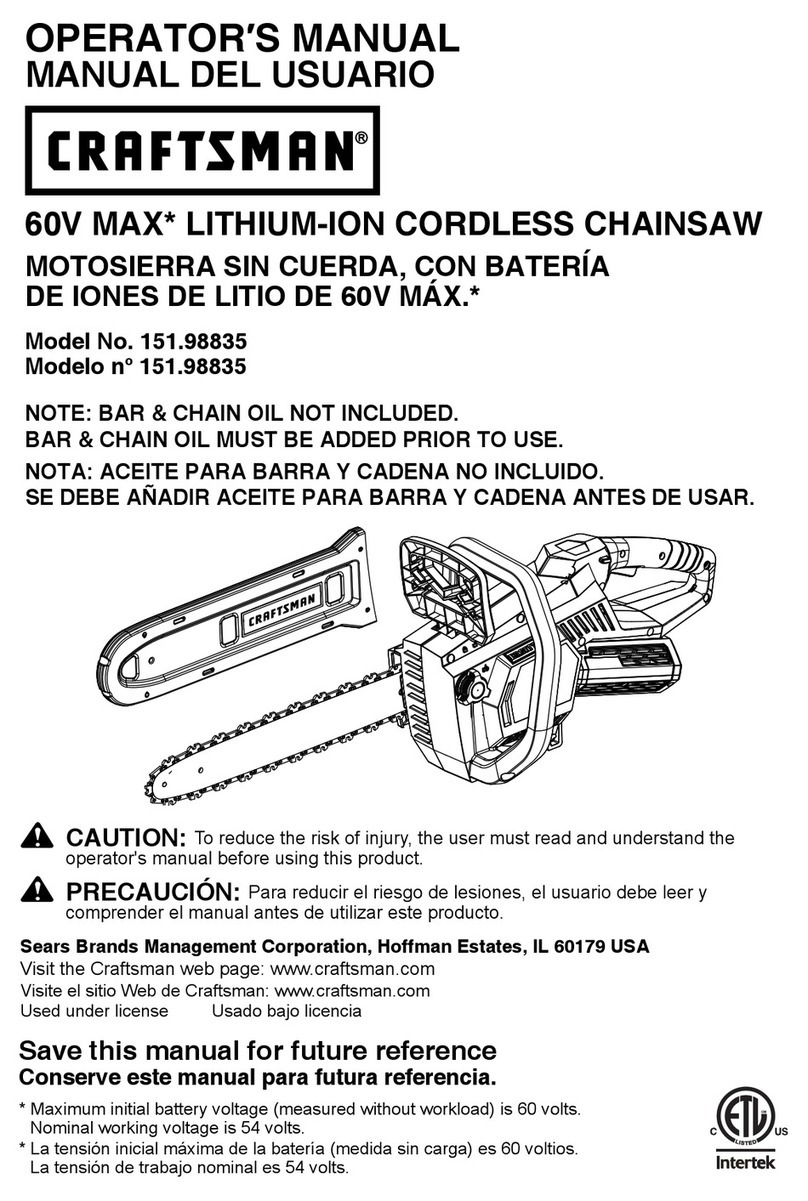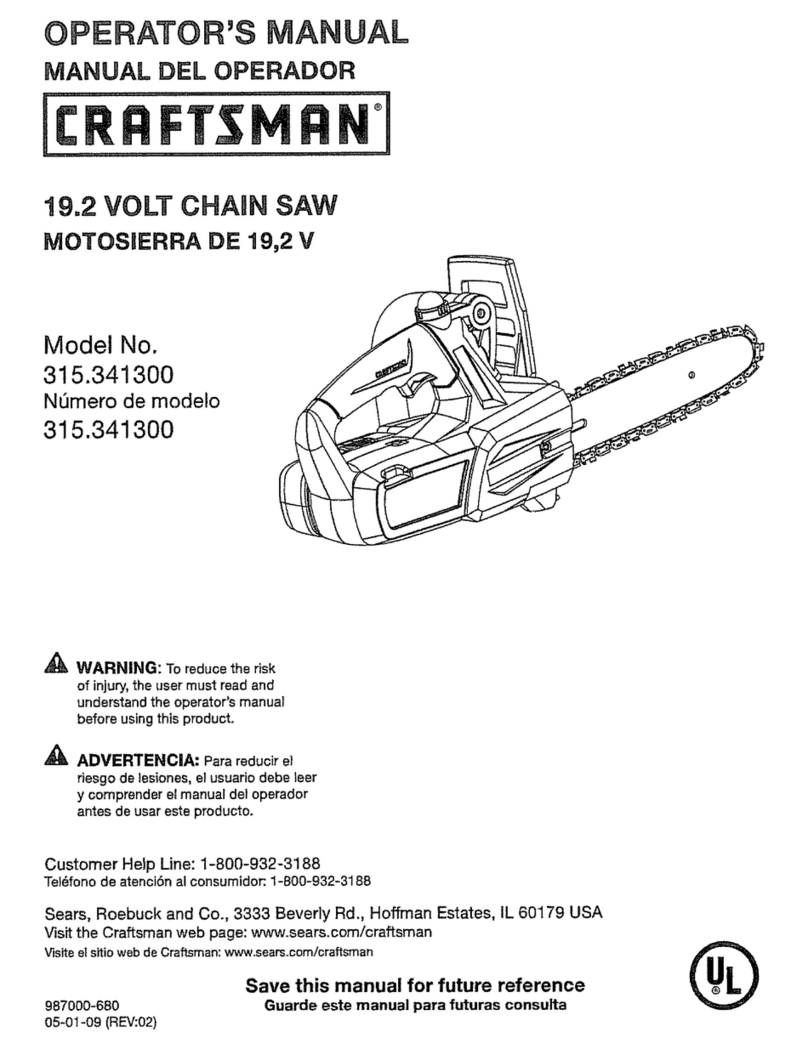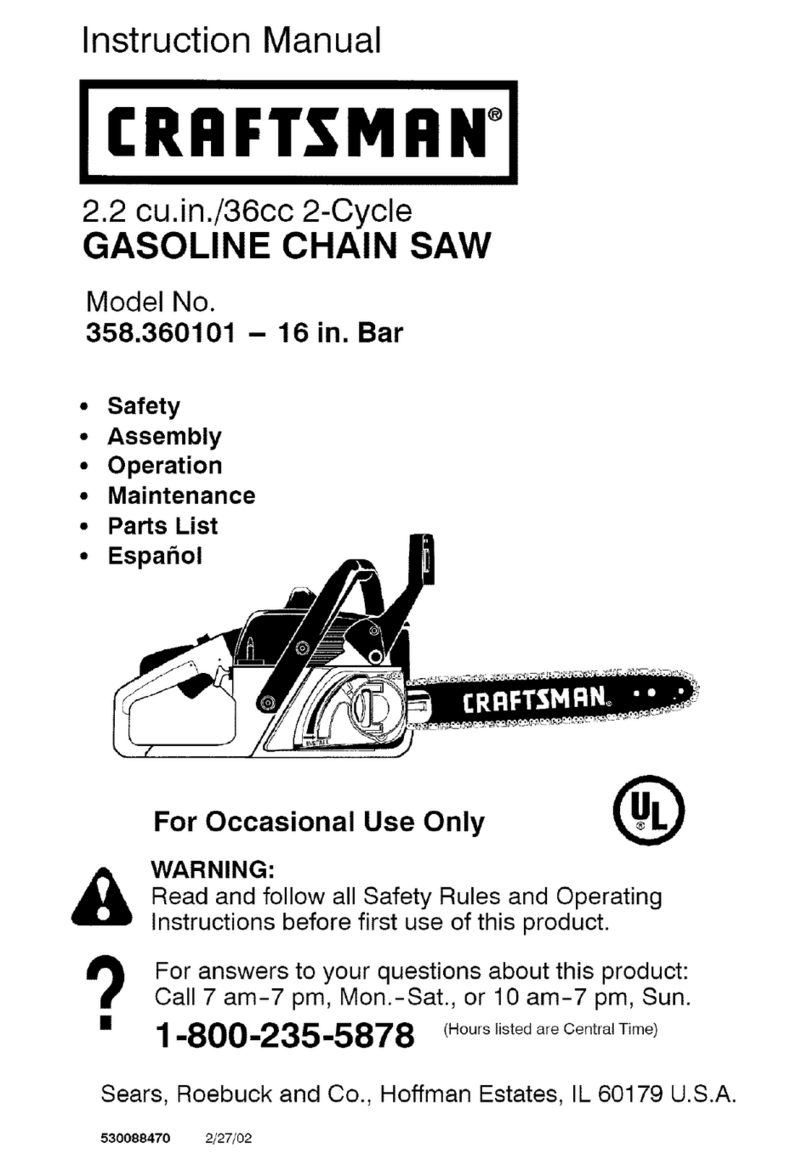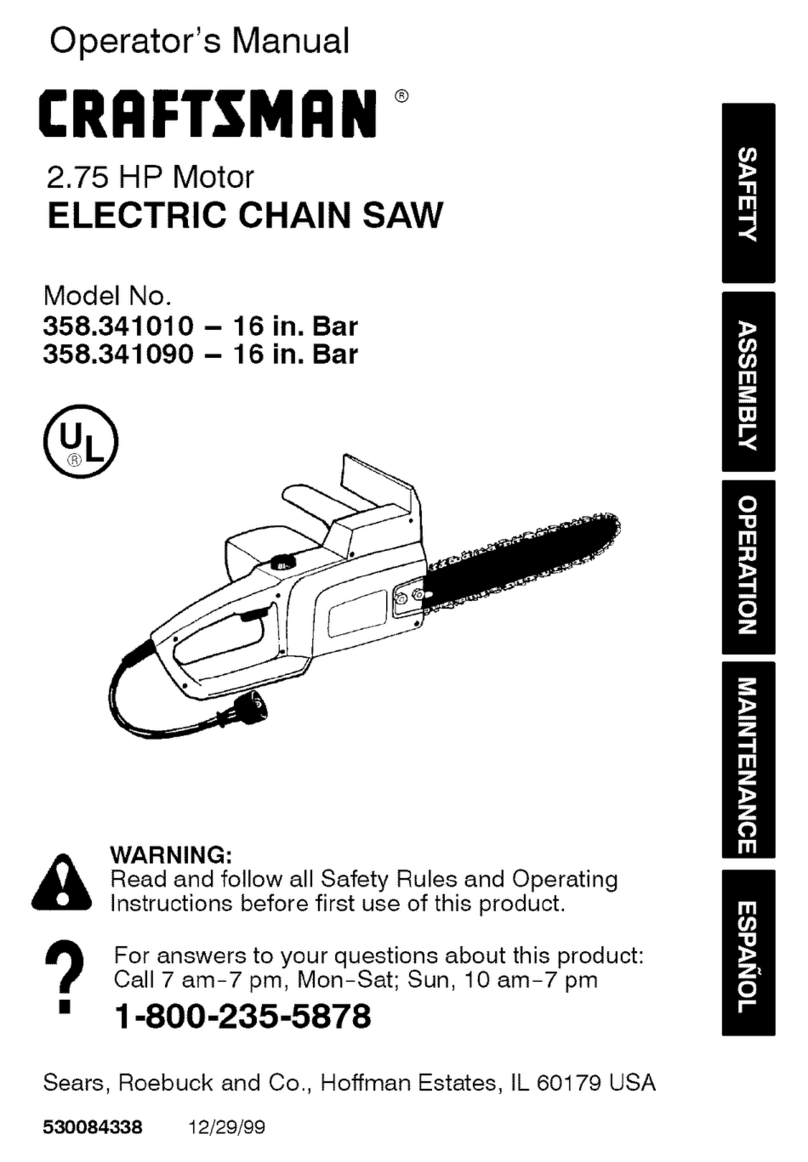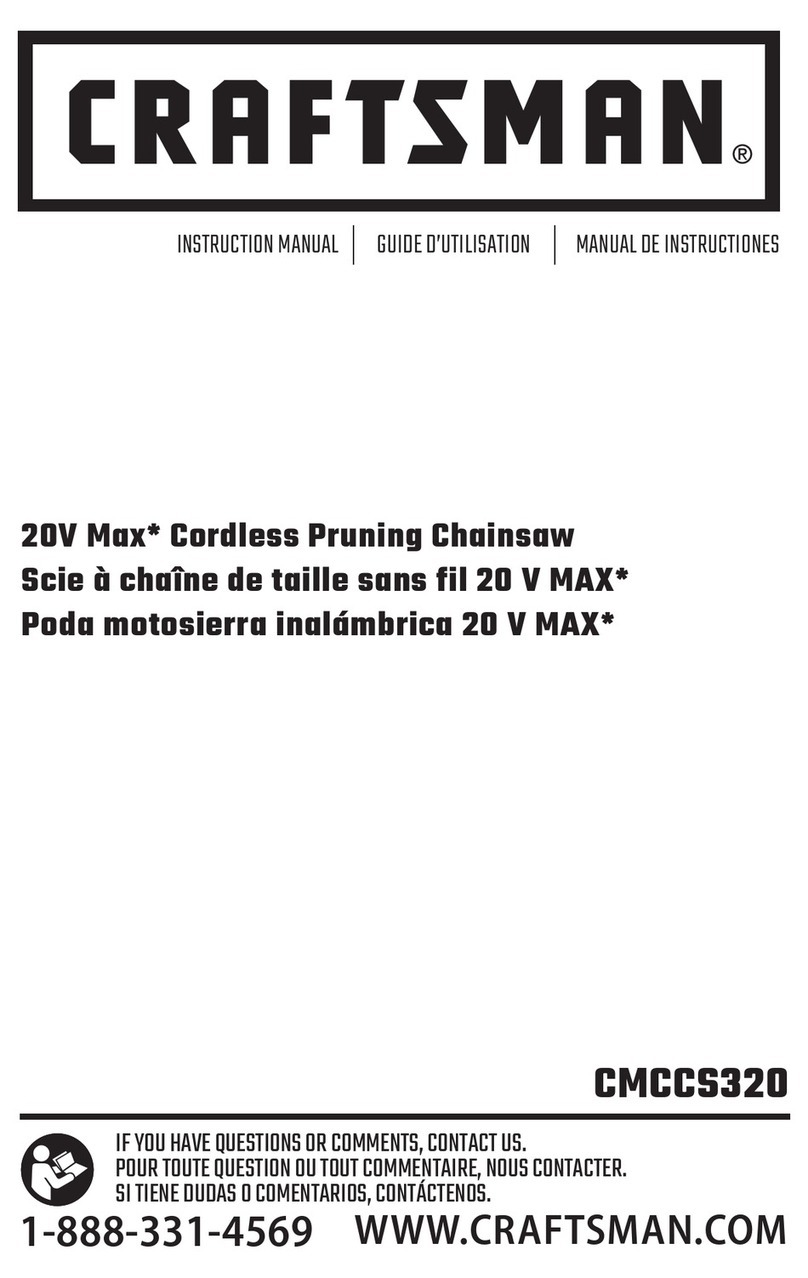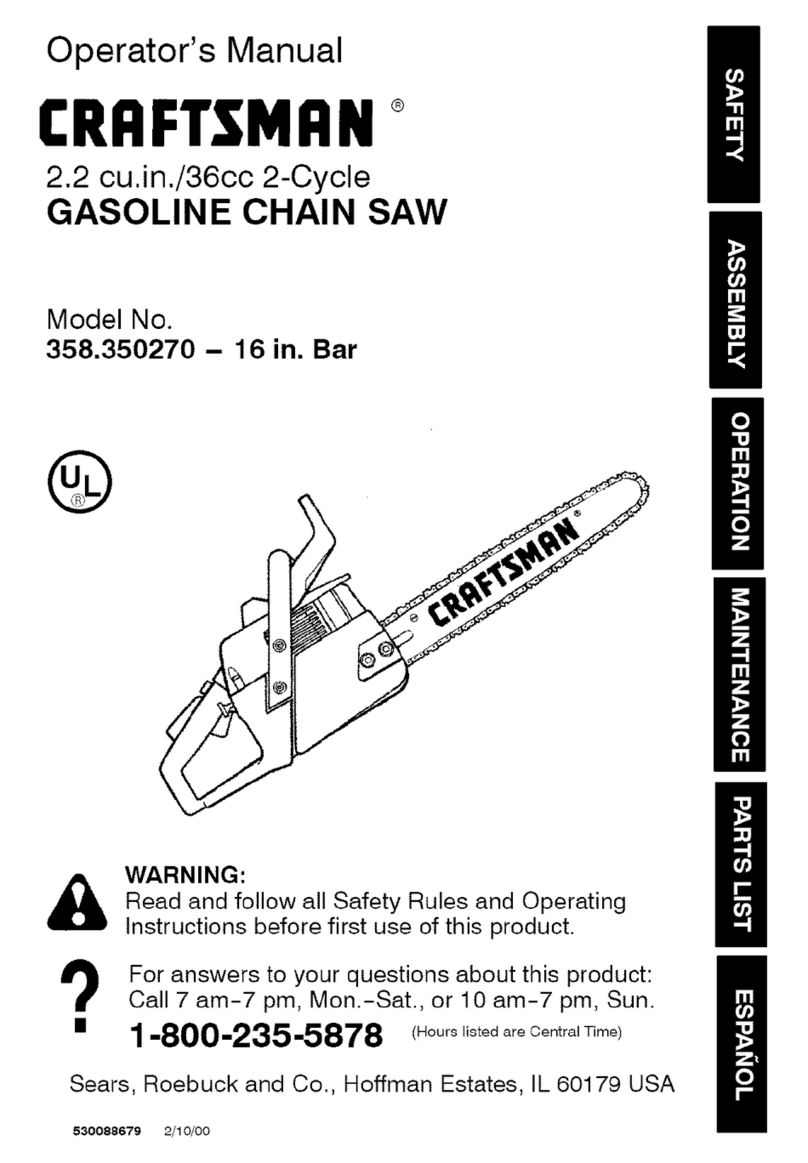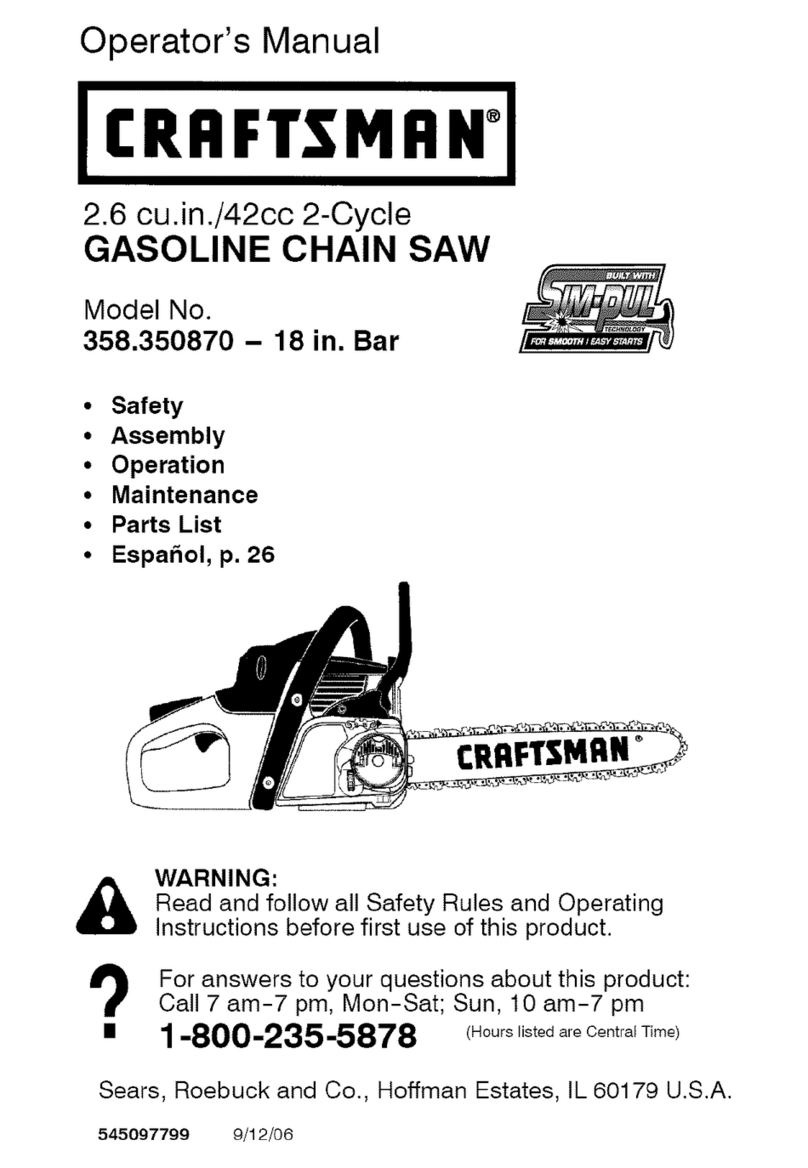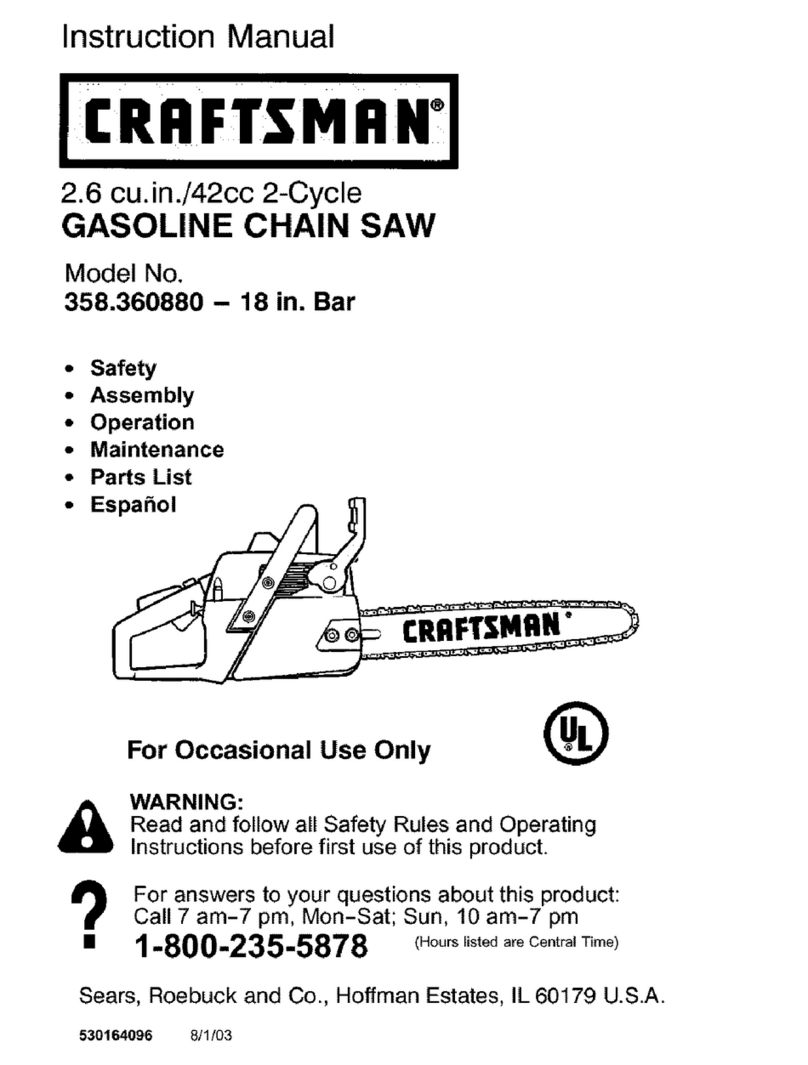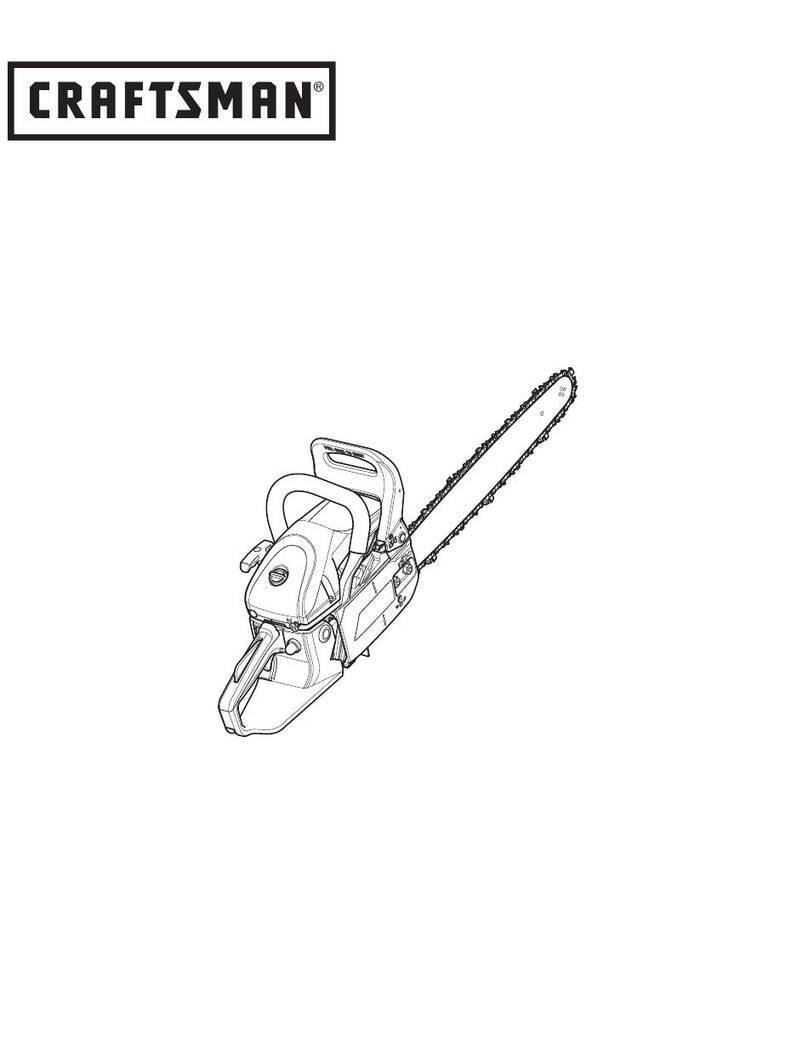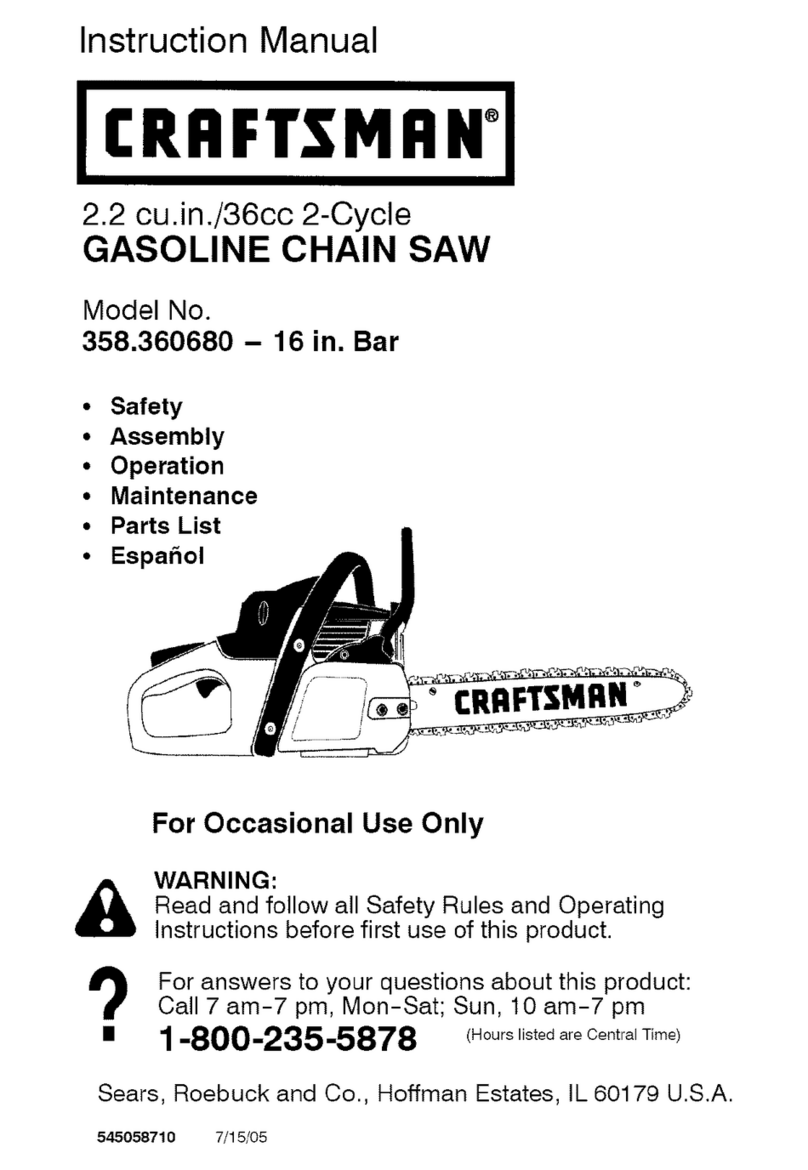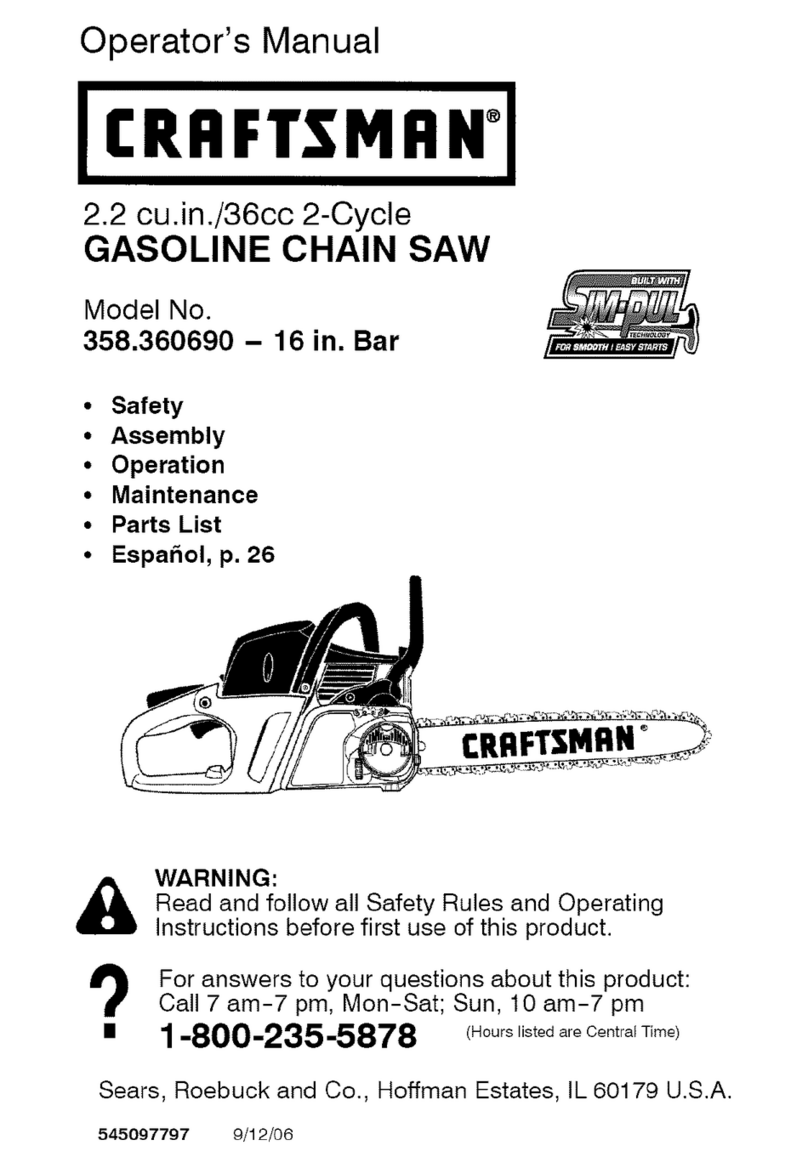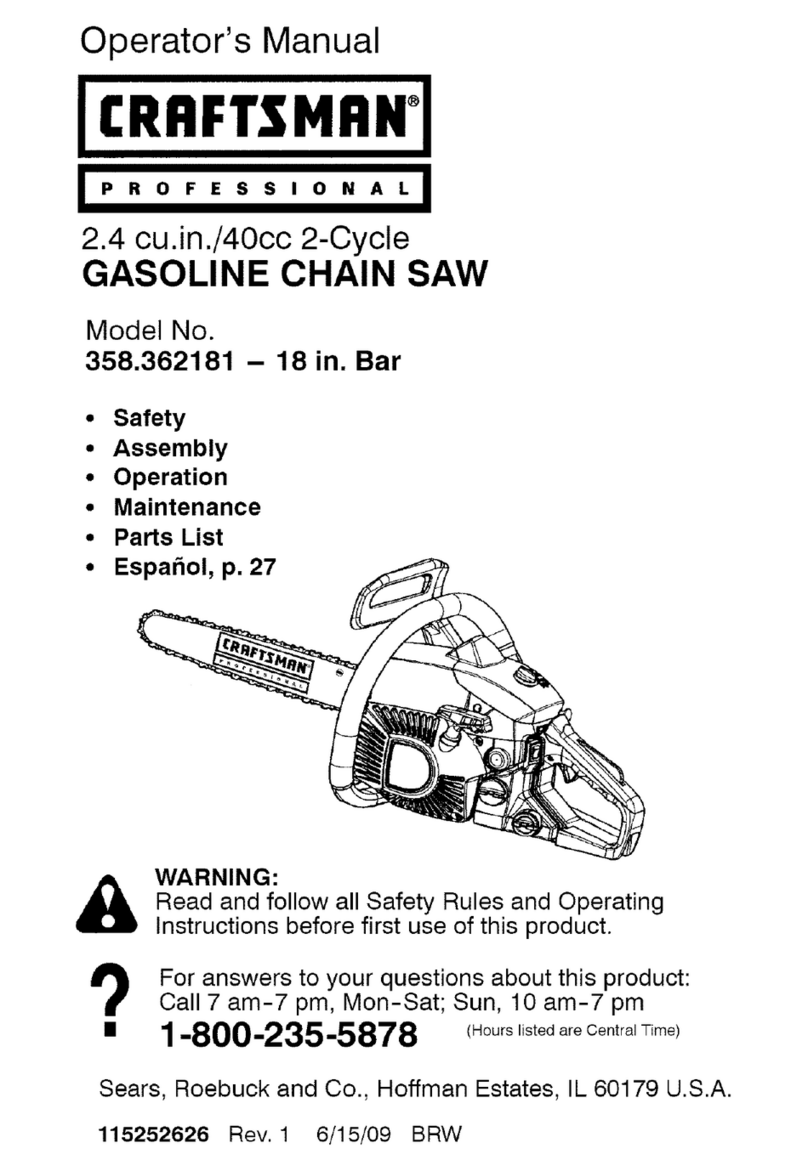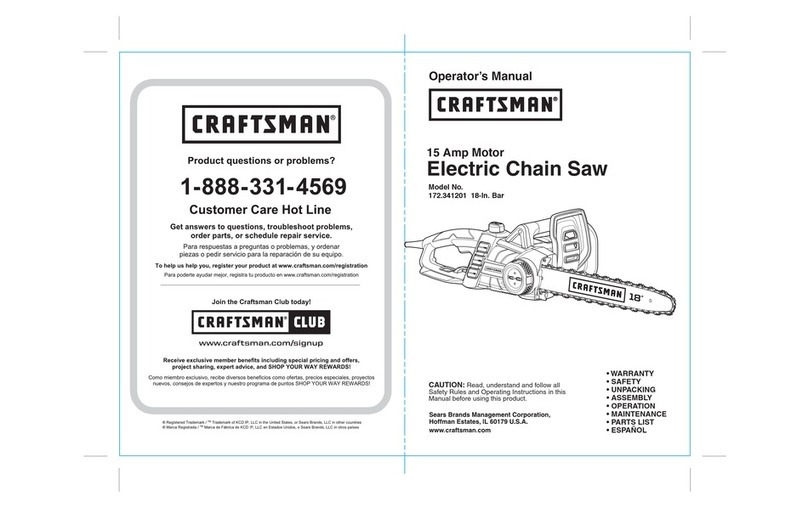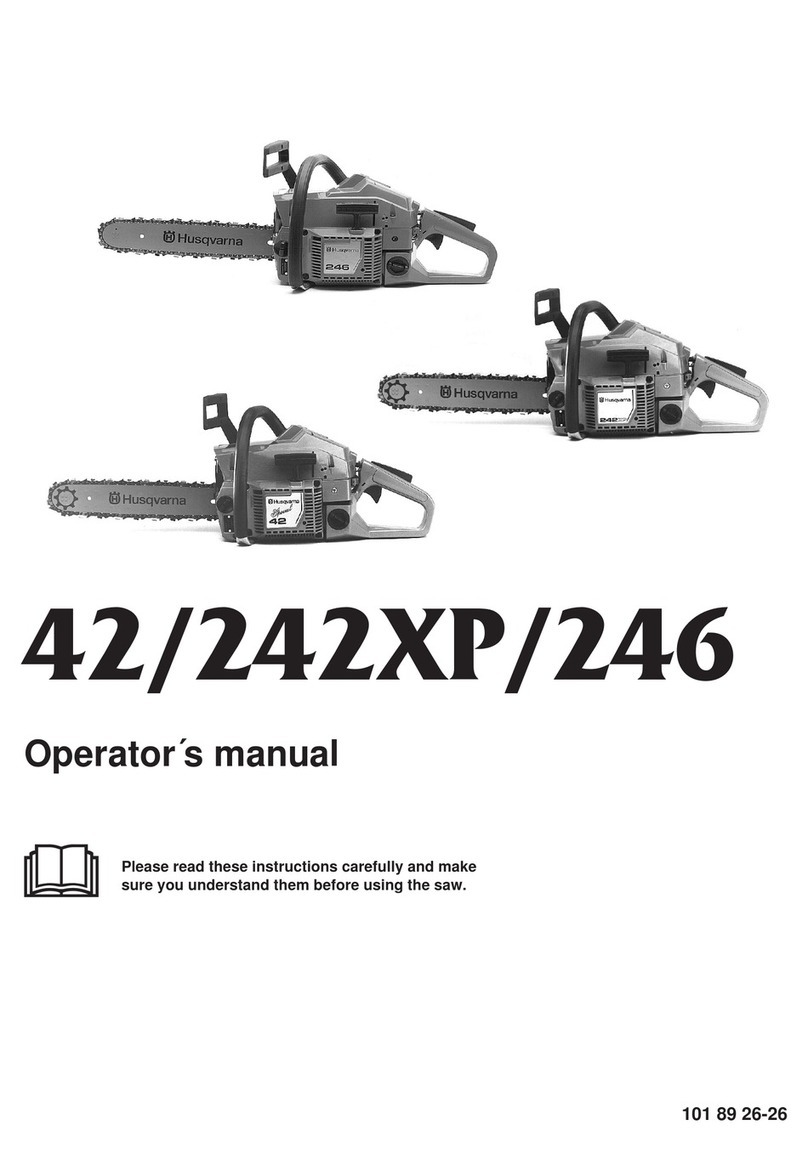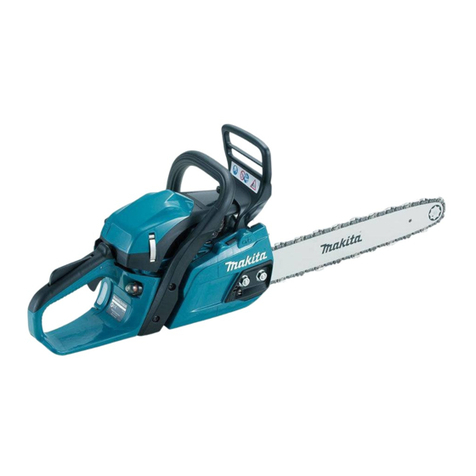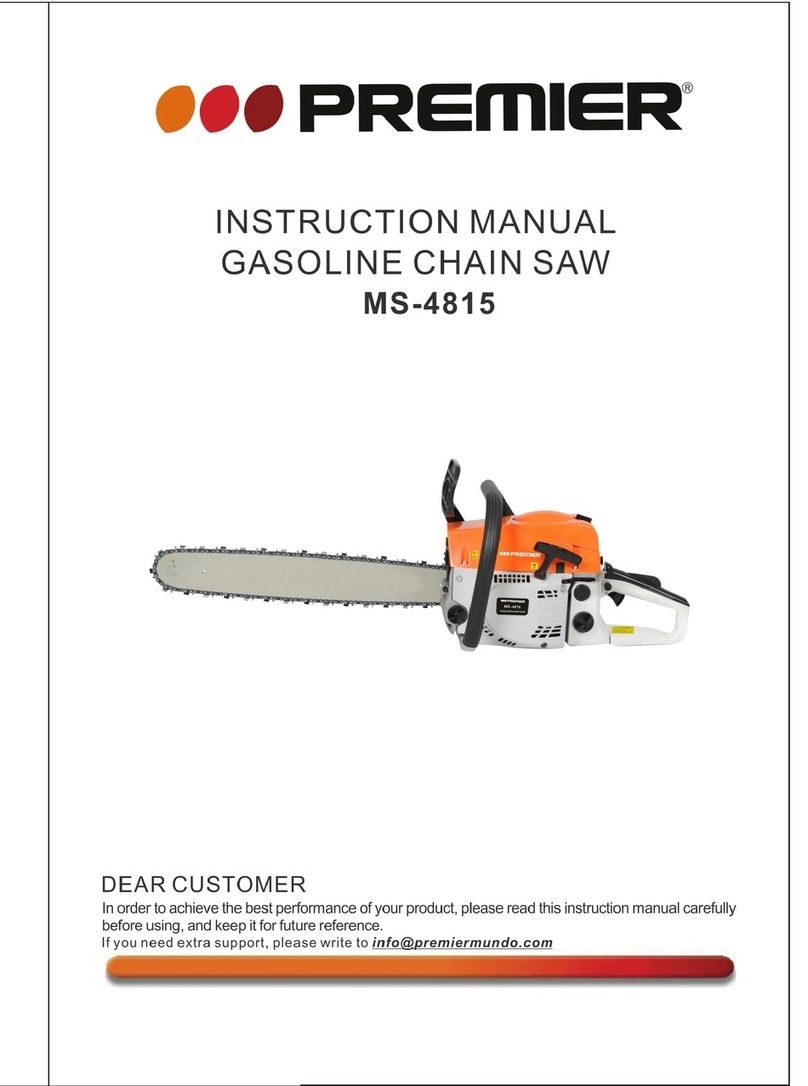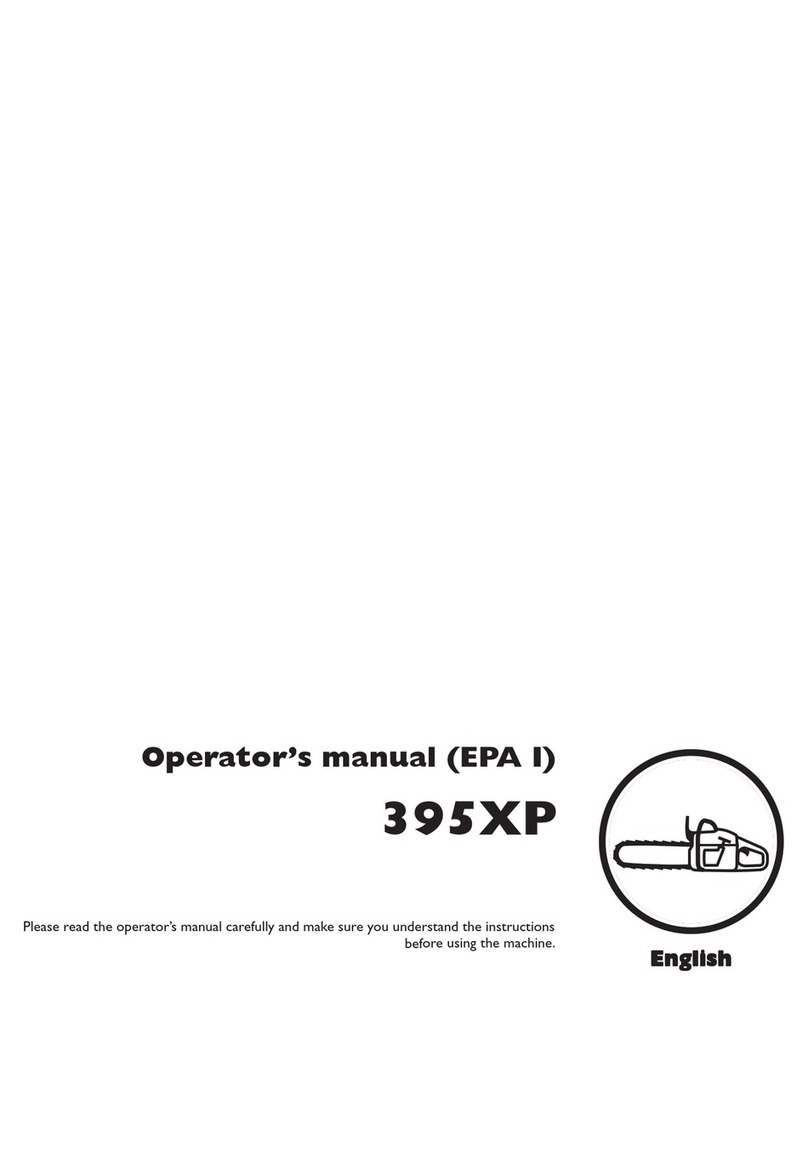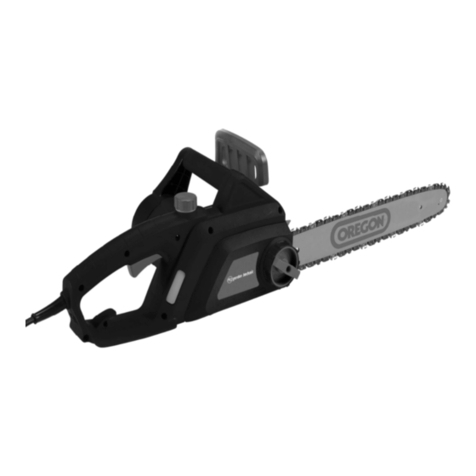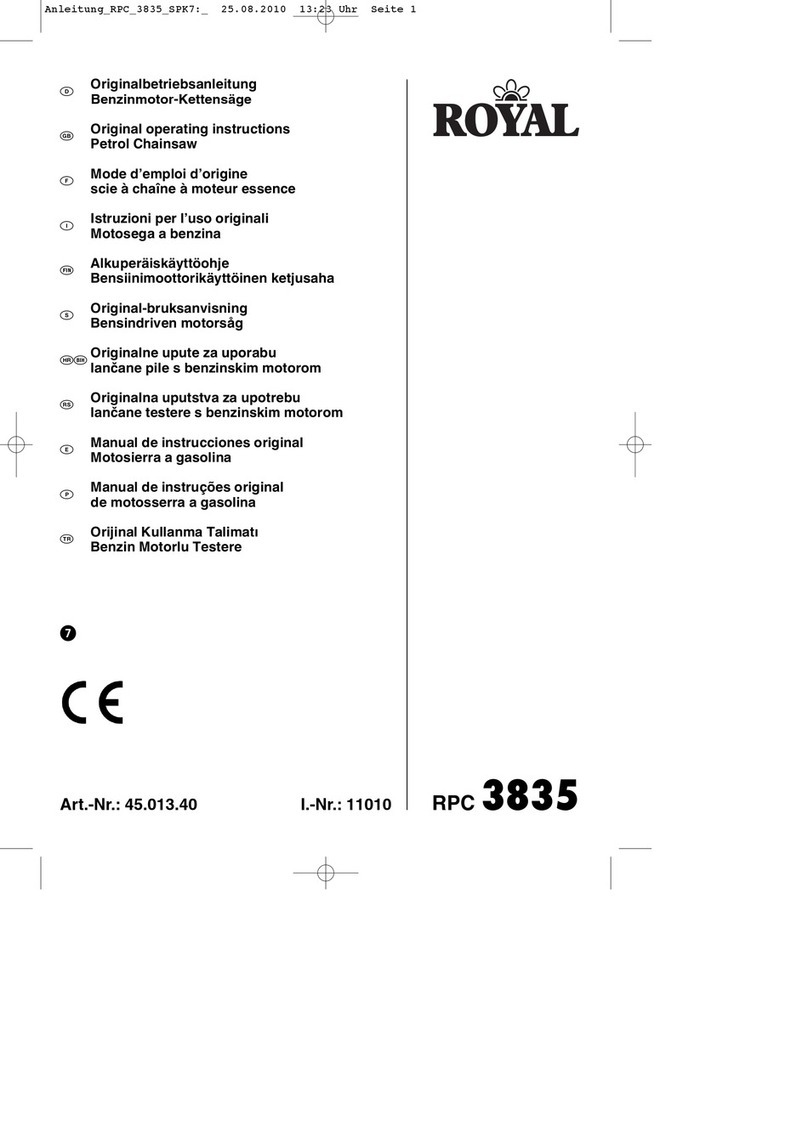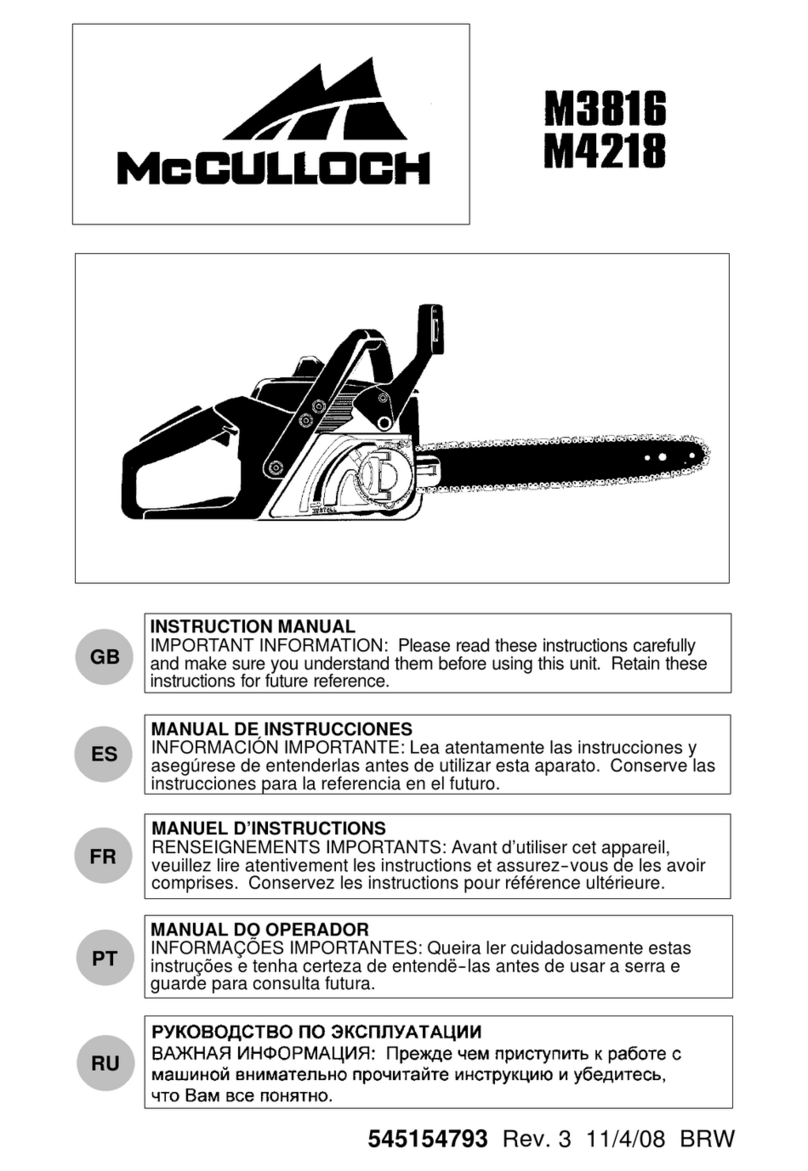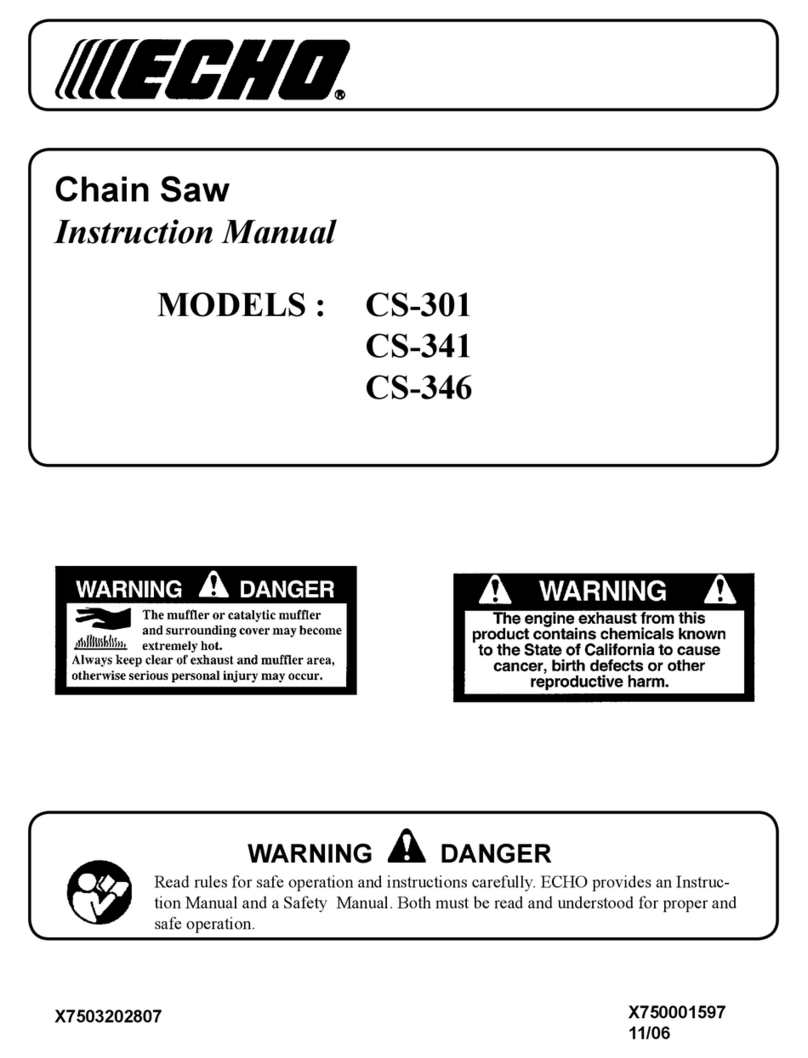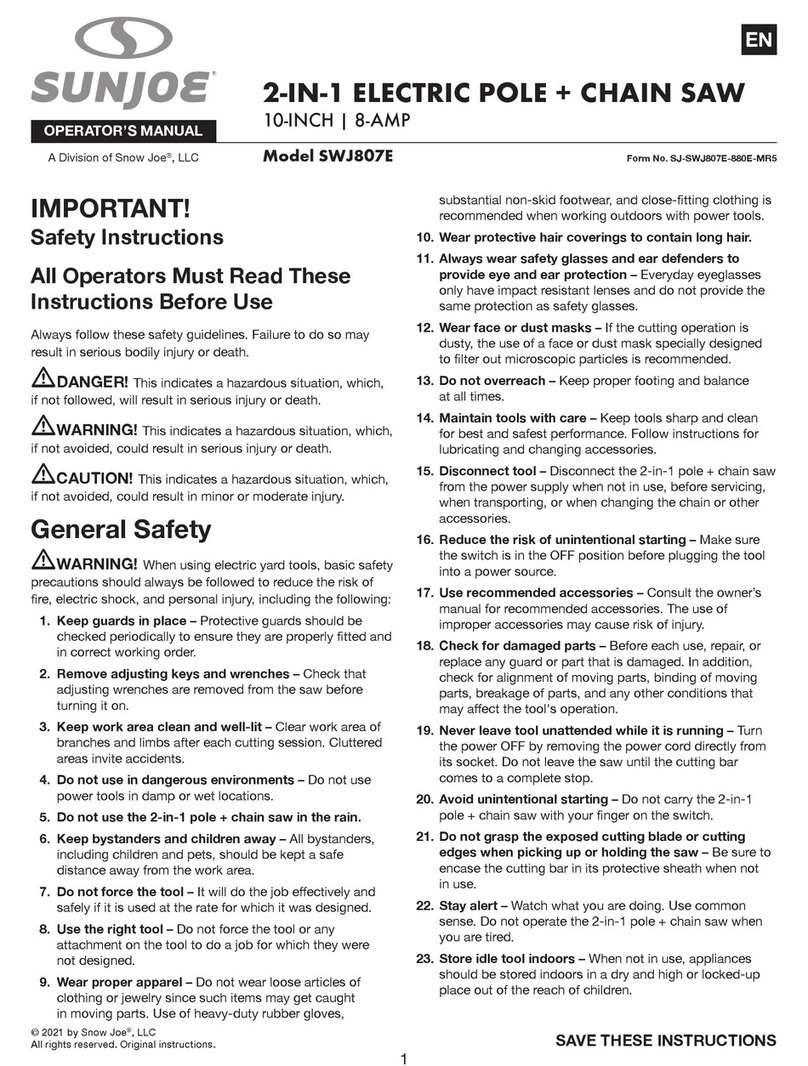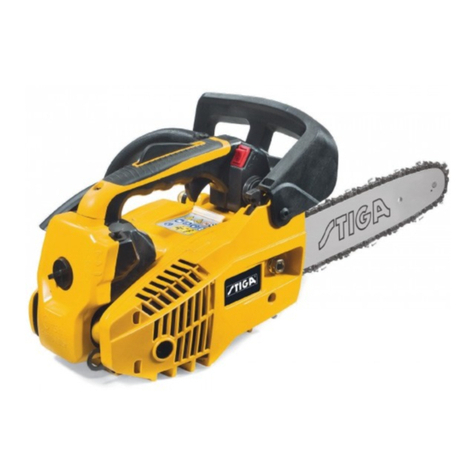NOTE:Whenpullingthestarterrope,
do notusethe full extentofthe rope.
Do not let starter rope snap back. Hold
handle. Let rope rewind slowly.
•Pull starter rope handle firmly and
quickly with your right hand until the
engine attempts to start, but no more
than 5 pulls. Then, push in choke
knob to the fulll position. Resume pull-
ing handle untilengine starts.
•Above 40°F, allow engine to runfor
approximately 5 seconds. Push the
choke knob in to the OFF position;
then squeeze and release throttle trig-
ger to allow engine to idle.
•Below 40°F, allow engine to warm up
for 30 seconds to I minute with choke
at approximatily 1/2 position. Push
choke knob into the OFF position;
then squeeze and release throttle trig-
ger to allow engine to idle.
•To stop engine, move On/Stop switch
to the STOP position.
STARTING A WARM ENGINE
DO NOT use the choke to start a warm
engine or flooding and hard starting
may occur.
•Move On/Stop switch to ON.
•Set fast idle lock.
•Be sure choke is in the OFF position.
•With saw on ground, grip front handle
with left hand and place your right foot
through rear handle.
•Pull starter rope handle until engine
starts.
• Squeeze and release throttle trigger
to return engine to idle speed.
DIFFICULT STARTING OR
STARTING A FLOODED ENGINE
The engine may be flooded if it has not
started after 10 pulls. Flooded engines
can be cleared of excess fuel with the
following procedure:
•Engage the fast idle lock.
•Verify that the On/Stop switch isin the
ON position.
•Push choke knob to the OFF position.
•With saw on ground, grip front handle
with left hand and place rightfoot
through rear handle.
•Pull starter rope handle until engine
starts.
•Starting could require many pulls de-
pending on how badly the unit Is
flooded. If engine stillfails to start, re-
fer to the TROUBLESHOOTINGchart or
call 1-800-235-5878.
OPERATING TIPS
•Check chain tension before first use
and after I minute of operation. See
Chain Tension in the Maintenance
section.
•Cut wood only. Do not cut metal, plas-
tics, masonry, non-wood building ma-
terials, etc.
•Stop the saw if the chain strikes a for-
eign object. Inspect the saw and re-
pair parts as necessary.
•Keep the chain out of dirt and sand.
Even a small amount of dirt will quick-
ly dull a chain and increase the possi-
bility of kickback.
•Practice cutting a few small logs using
the following steps. This will help you
get the =feel" of using your saw before
you begin a major sawing operation.
•Squeeze the throttle trigger and al-
low the engine to reach full speed
before cutting.
•Begin cutting with the saw frame
against the log.
•Keep the engine at full speed the
entire time you are cuffing.
•Allow the chain to cut for you. Exert
only lightdownward pressure.
•Release the throttle trigger as soon
as the cut is completed, allowing the
engine to idle. If you run the saw at
full throttle without a cutting load,
unnecessary wear can occur.
•To avoid losingcontrol when cut is
complete, do not put pressure on
saw at end of cut.
•Stopengine before settingsaw down.
TREE FELLING TECHNIQUES
WARNING: Check for broken or dead
branches which can fall while cutting
causing serious injury. Do not cut near
buildingsor electrical wires if you do not
know the direction of tree fall, nor cut at
nightsince you will not be able to see
well, nor during bad weather such as
rain, snow, or strong winds, etc.
•Carefully plan your sawing operation
in advance.
•Clear the work area. You need a clear
area all around the tree so you can
have secure footing.
•Study the natural conditionsthat can
cause the tree to fall in a particular
direction. These conditions include:
•The wind direction and speed.
•The lean of the tree. The lean of a
tree might not be apparent due to
uneven or sloping terrain. Use a
8

